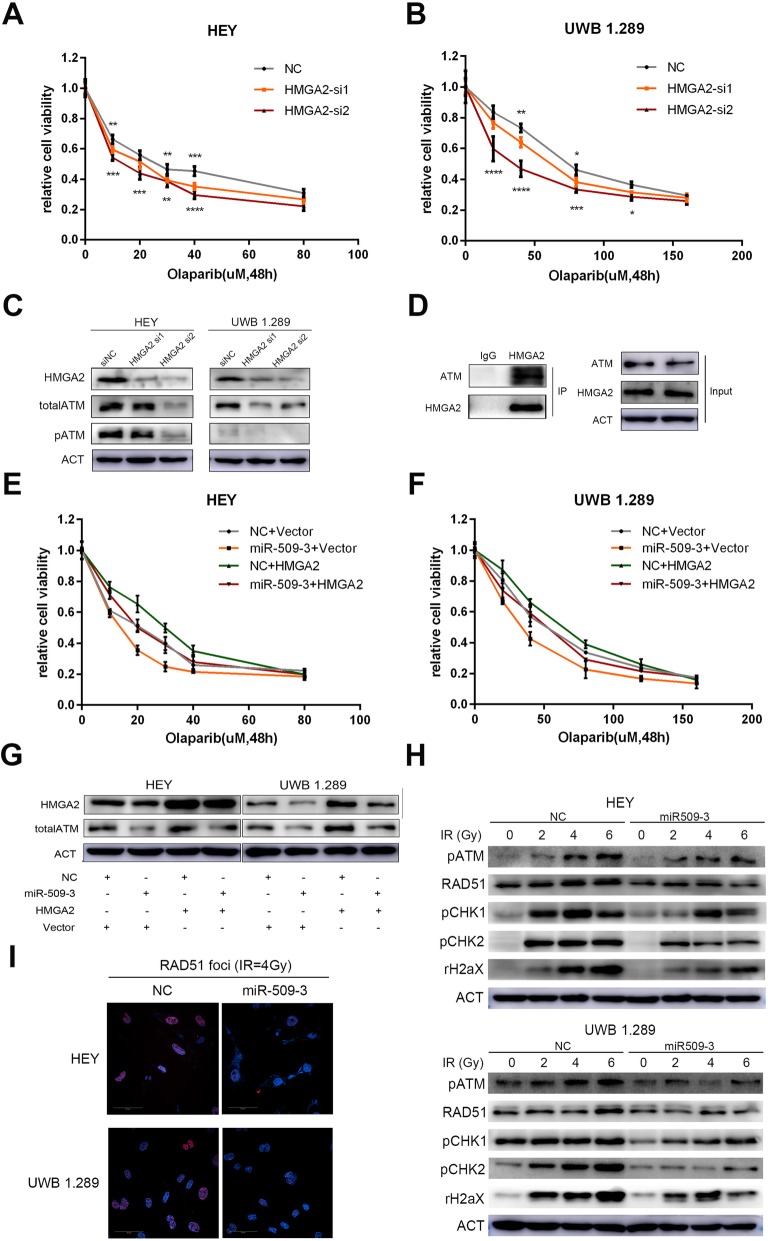Fig. 5.
MiR-509-3 increases sensitivity to Olaparib by downregulating RAD51 and impairing HMGA2-ATM axis in ovarian cancer cell. a, b Relative cell viability of HEY and UWB1.289 which were transfected with two HMGA2 siRNAs and then treated with Olaparib for 48 h in accordance with the previous concentration gradient. The viability curve illustrated that HMGA2 downregulation enhanced the cell response to Olaparib significantly. c Western blot assay confirmed the interference efficiency of two HMGA2 siRNAs. And the total ATM and activated ATM protein level were both decreased along with the down-regulation of HMGA2. d Co-immunoprecipitation of HMGA2 and ATM protein. HEY cells were lysed and mixed with rabbit anti-human HMGA2 polyclonal antibody or normal rabbit IgG. Anti-HMGA2 antibody could co-immunoprecipitate ATM and HMGA2 while immunoglobin G (IgG) had no effect. e, f Rescue impact of HMGA2 on the response to Olaparib. Transfection of HMGA2 cDNA (in pEnter vector) could abrogate the miR-509-3-induced Olaparib sensitivity to Olaparib in HEY and UWB1.289 cell lines. The cell viability curves of different groups were drawn by four colors. g Protein level of four rescue groups. For the four treatment groups, transfection of HMGA2 cDNA could indeed upregulate the HMGA2 protein level and total ATM expression down-regulation was rescued by up-regulation of HMGA2 in miR-509-3 overexpressing cells. h HEY and UWB1.289 cells with miR-509-3 or NC were exposed to irradiation at different dose (0, 2, 4, 6 Gy) to induce DNA damage and repair system. MiR-509-3 overexpressing group significantly exhibited a lower protein level of ATM-CHK1/2 pathway (phospho-ATM, phospho-CHK1, phospho-CHK2 and phospho-H2AX.) and RAD51. i IF images of RAD51 foci in HEY and UWB1.289. Cells were treated with irradiation of 4Gy and 4 h later, RAD51 functional nuclear foci formation was detected by IF photographed and was found to be remarkably reduced by miR-509-3. Nuclei were stained with DAPI (blue)

